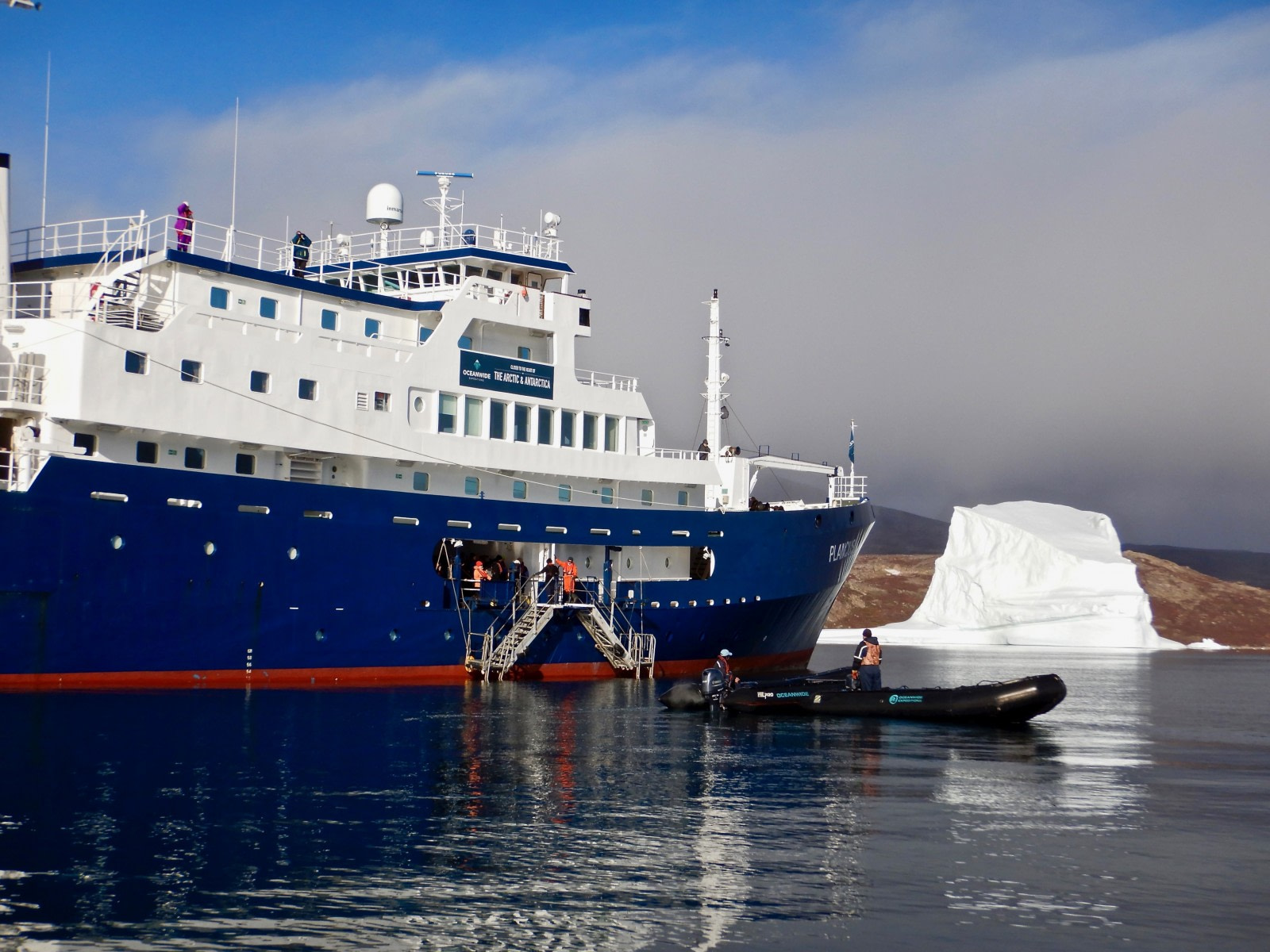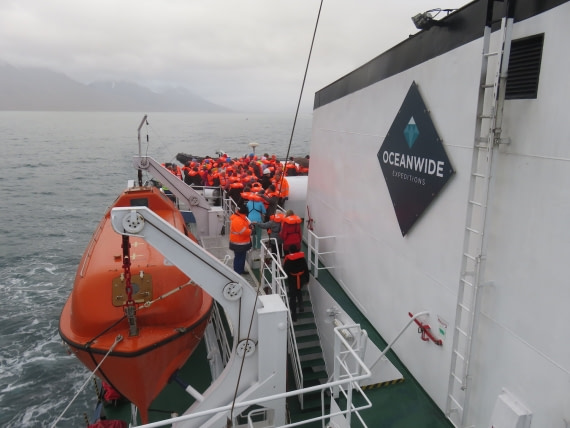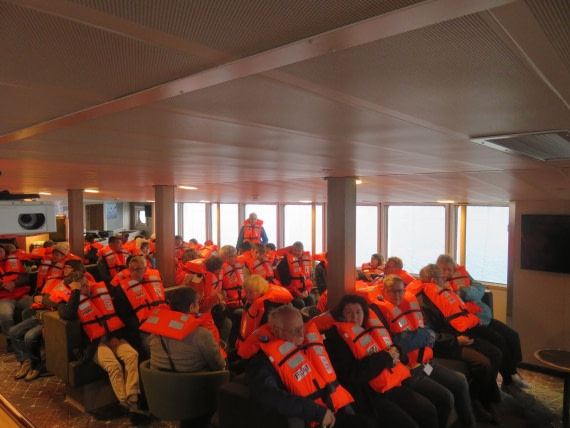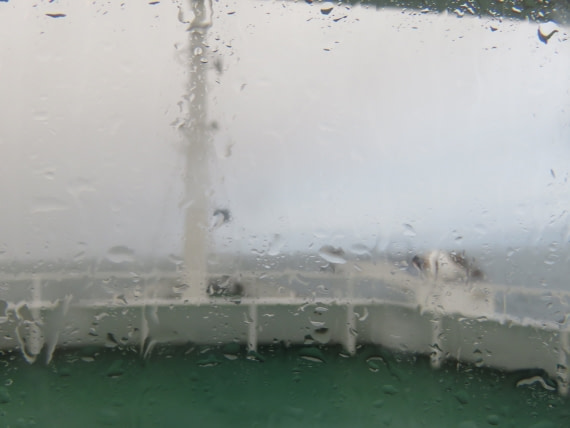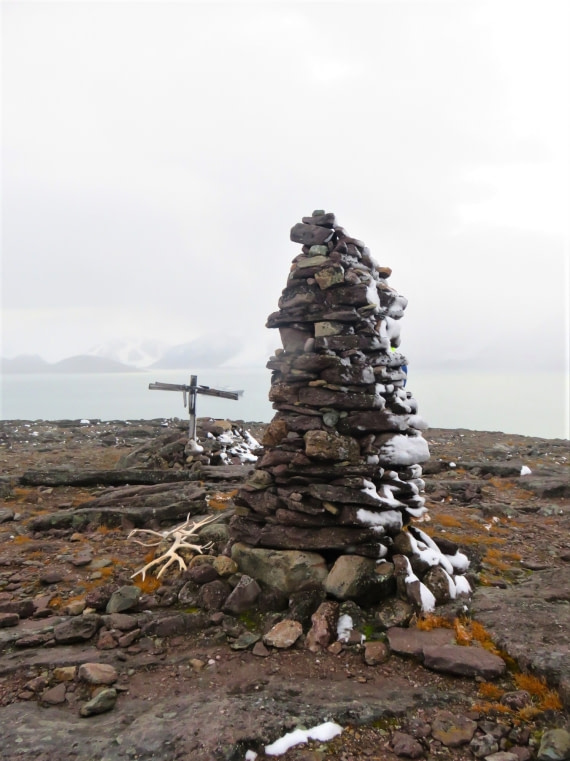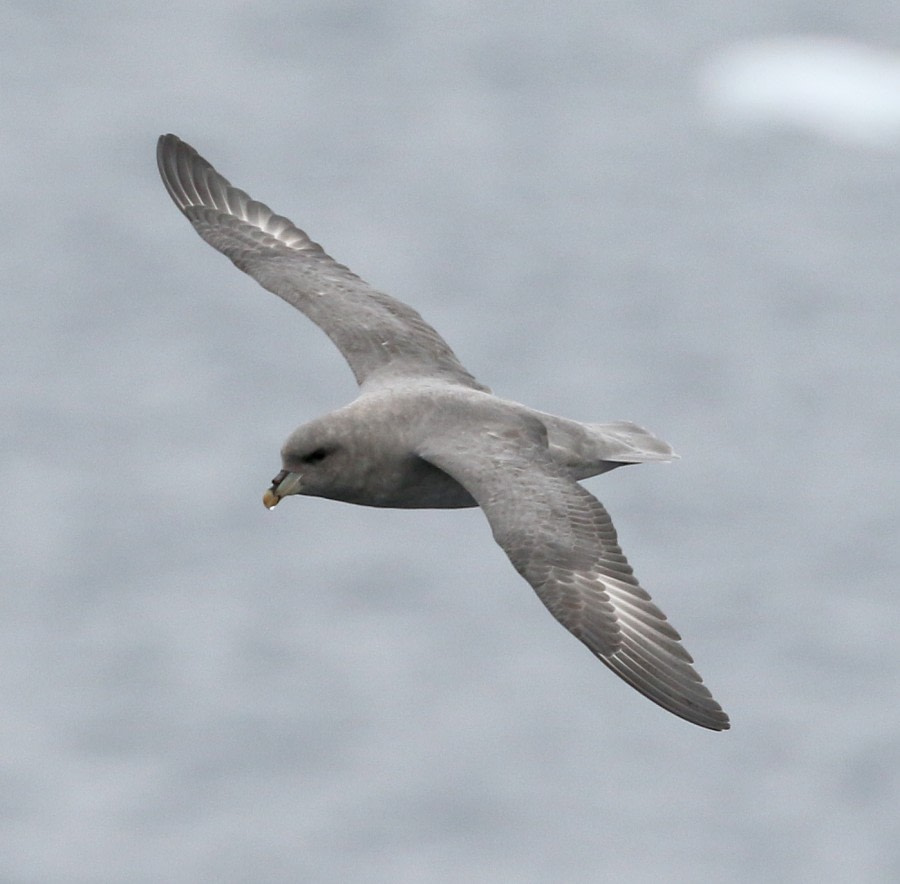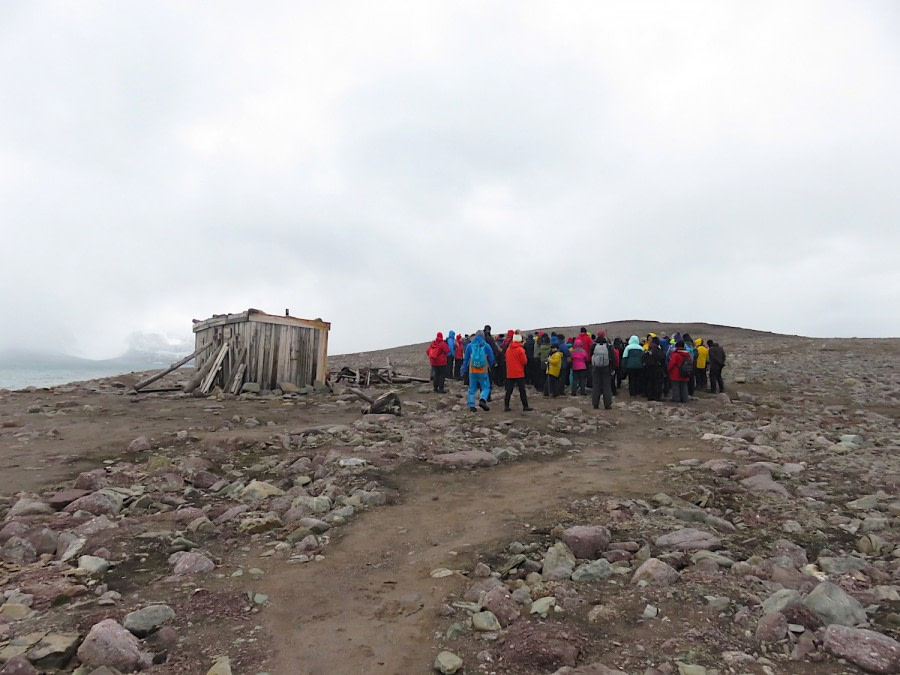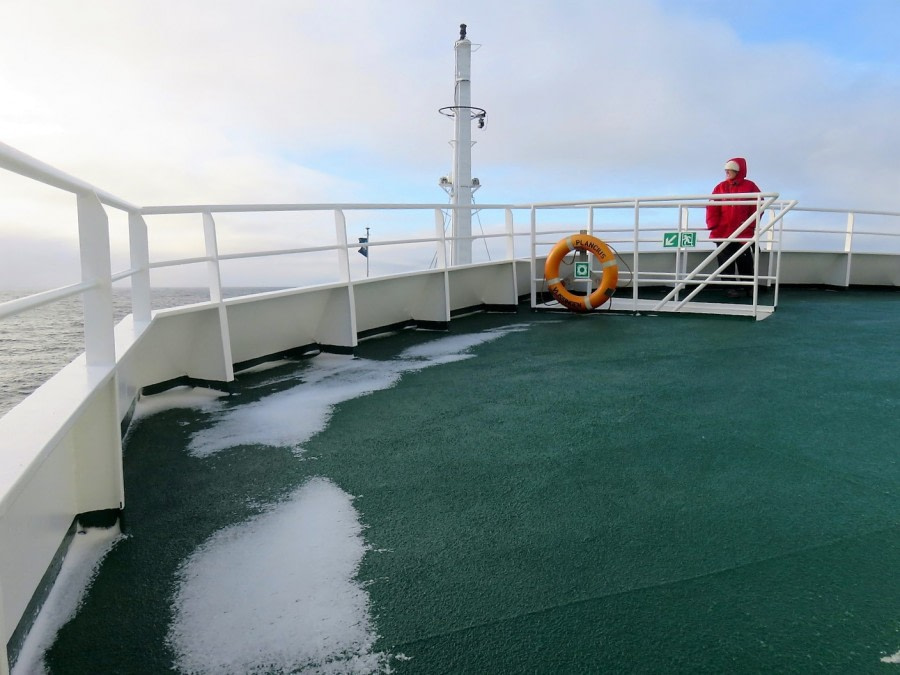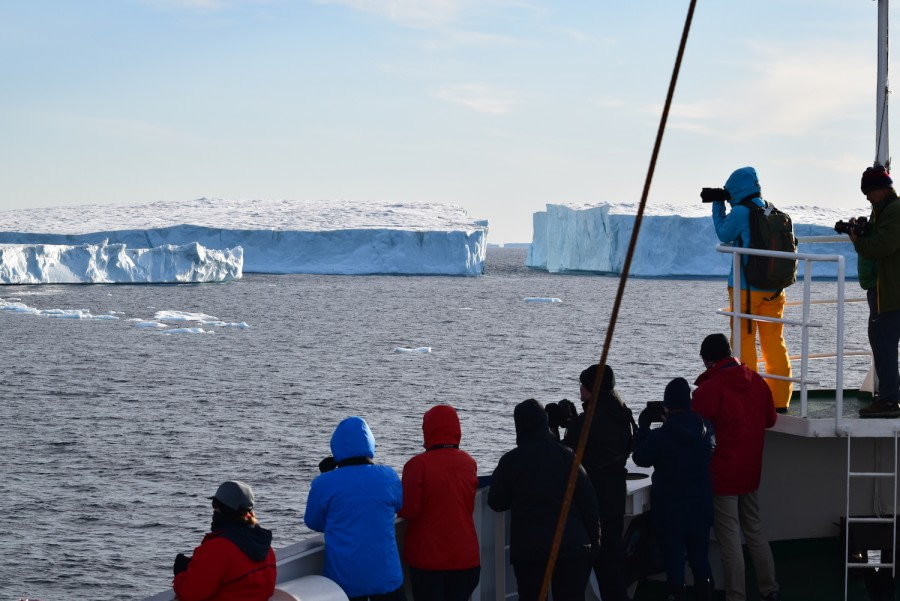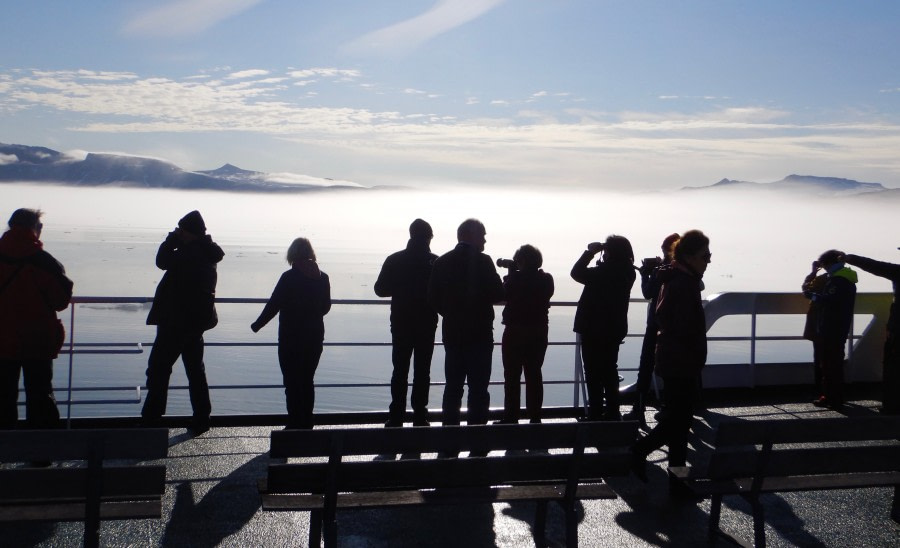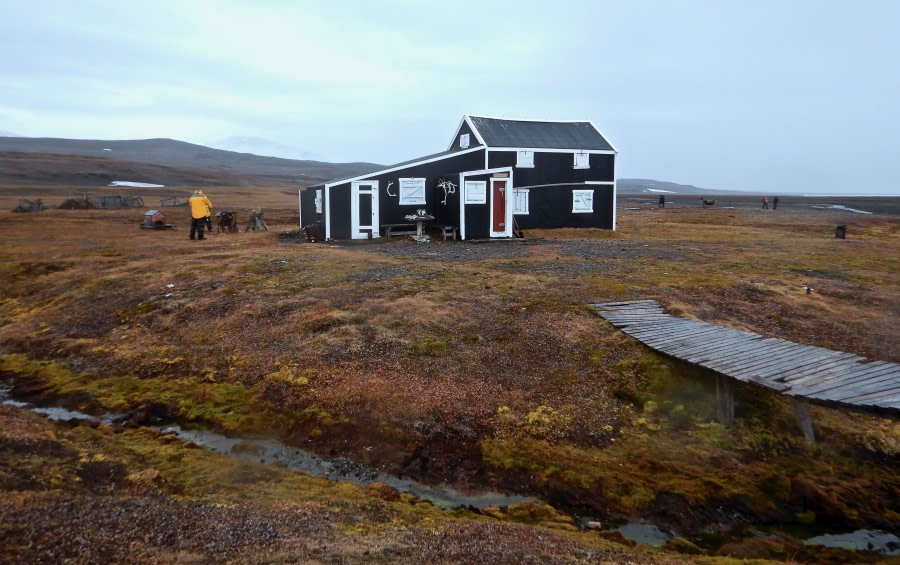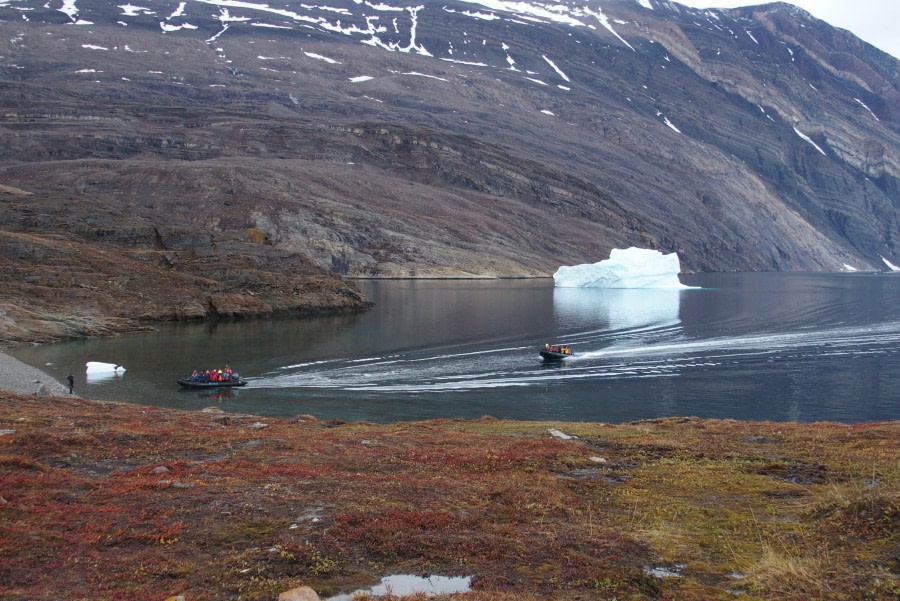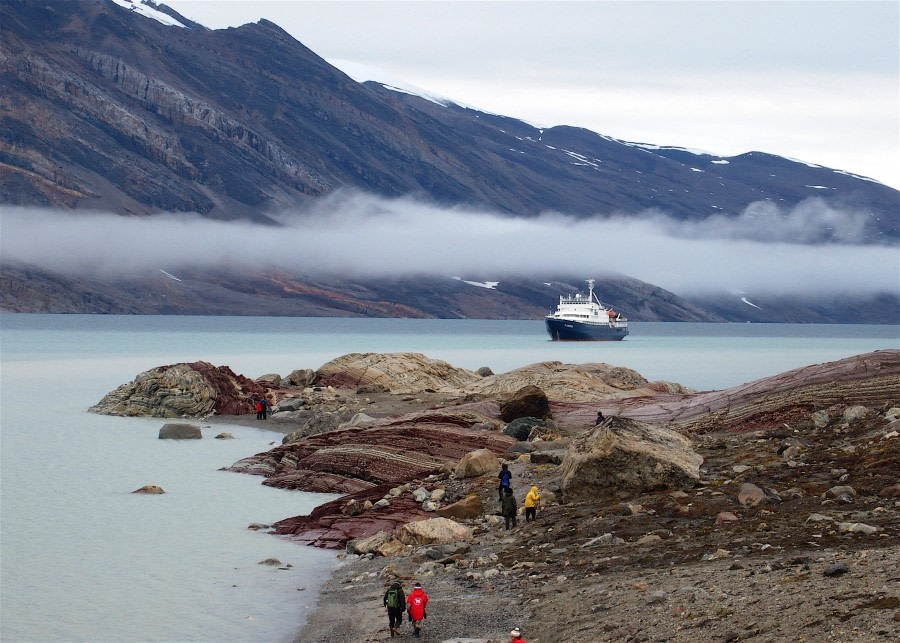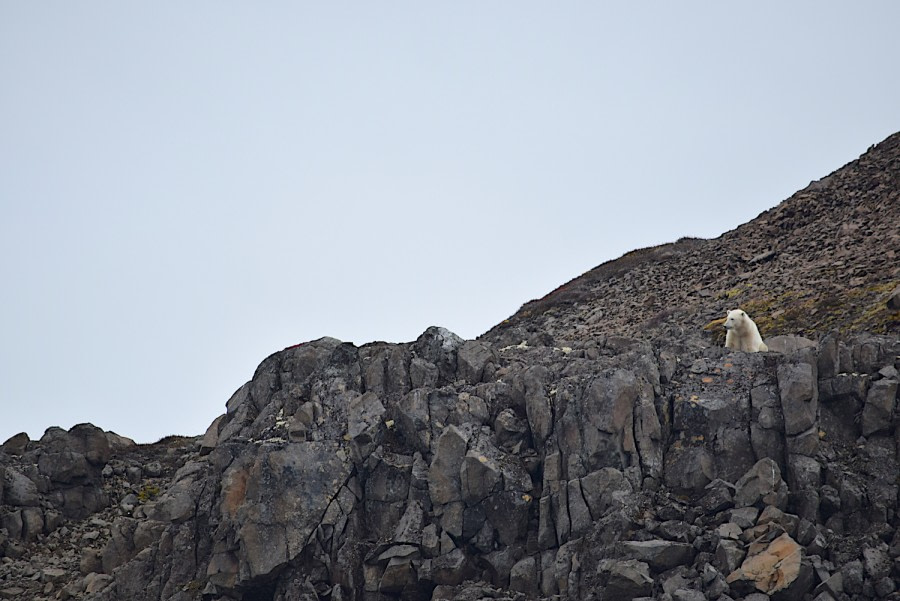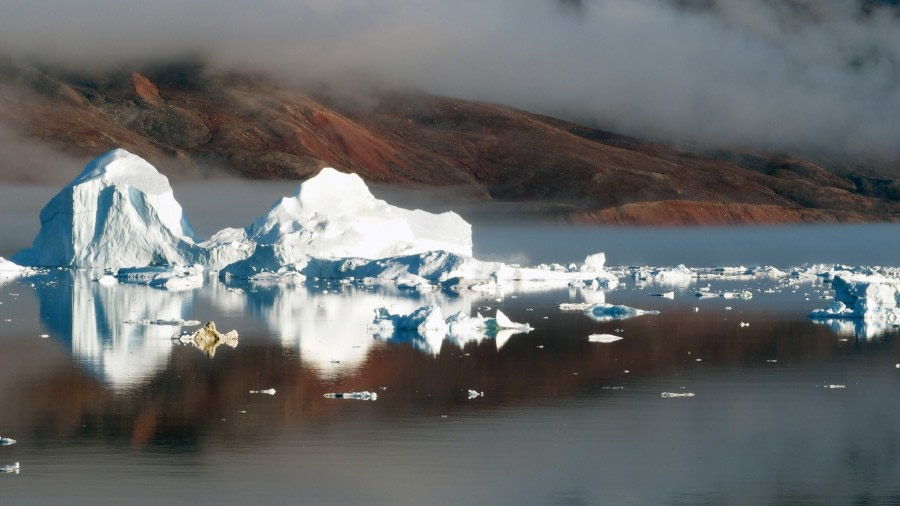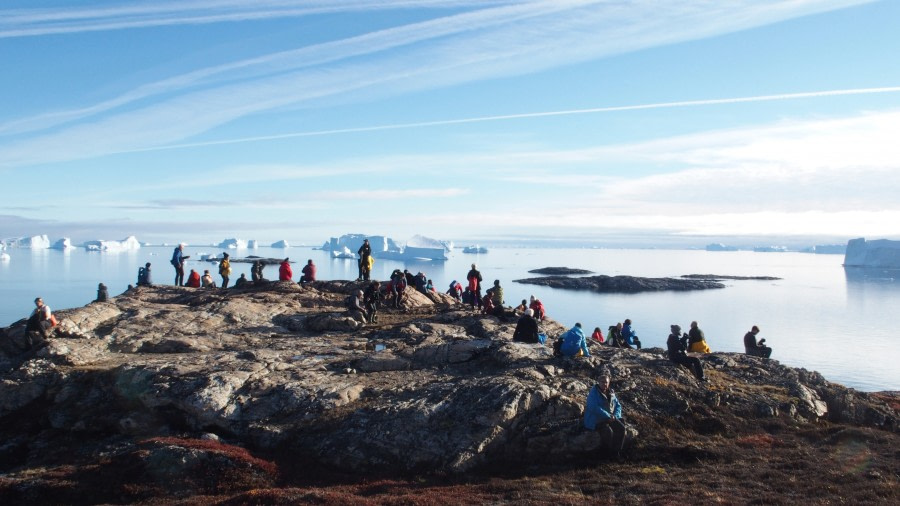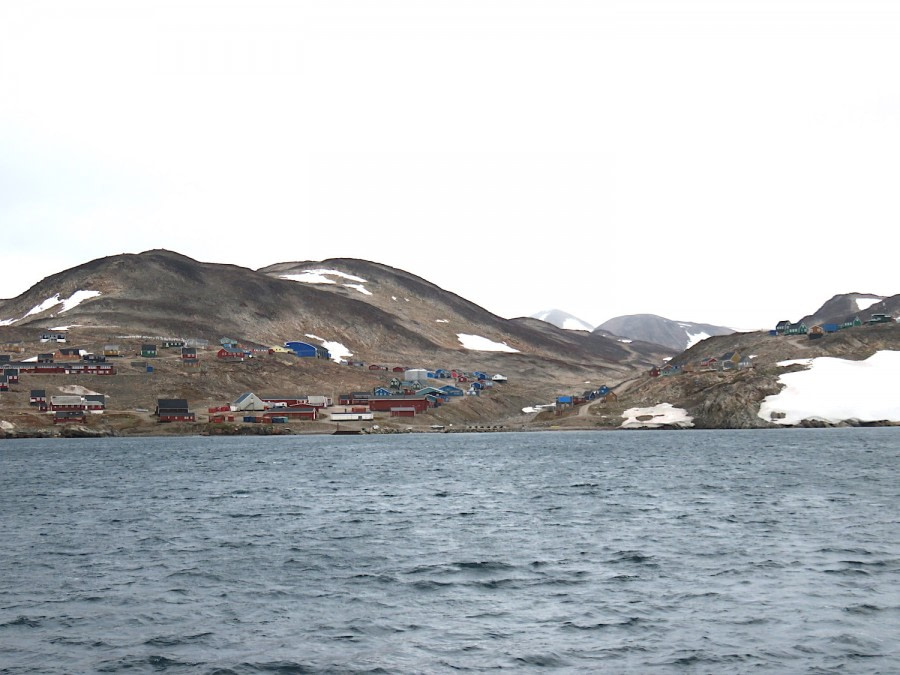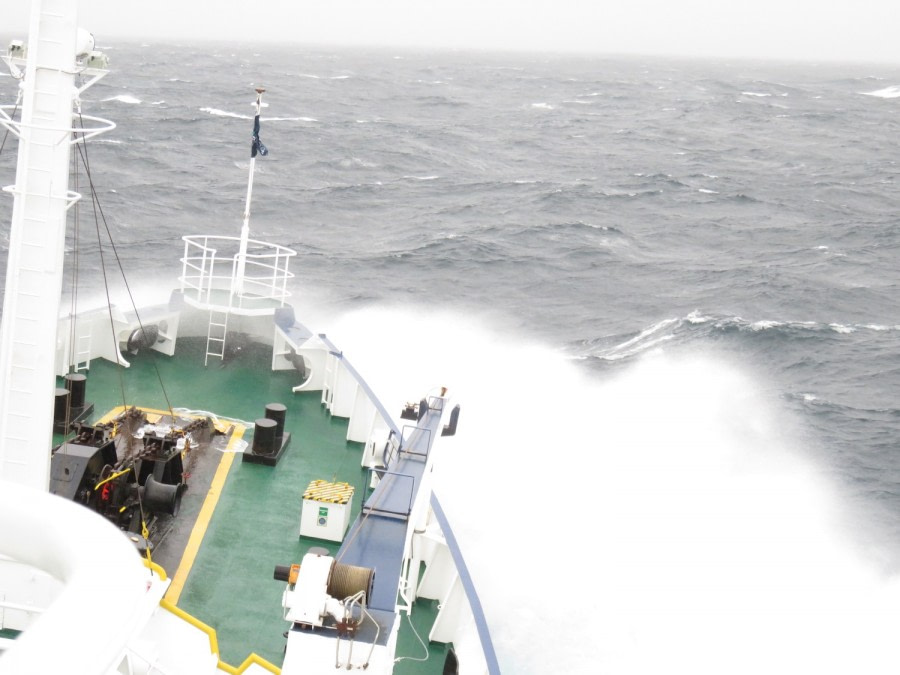| Datum: |
10.09.2018 |
| Positie: |
73° 28.3‘N, 021° 29.4‘W |
| Wind: |
W 2 |
| Weer: |
overcast with rain |
| Luchttemperatuur: |
+2 |
After an incredible day in and out of fog yesterday, it was good to wake up to no fog. Unfortunately, though there was some rain. We had moved a little South overnight, into Myggebukta, in a small bay called Mackenzie Bugt at the entrance to Franz Joseph Fjord. Following breakfast, we dressed in all our rainproof clothing and went to the gangway, ready for a wet ride to a wet shore. That shore was in Greenland, and we were going, rain or no rain! The ride in on the zodiacs was smooth, as the seas were almost glassy with only a slight lingering swell., We arrived to a shallow gravelled beach with a short ridge rising up to a large outwash delta covered in tundra. Beau briefed us about the perimeter landing and we headed up to explore the area with our guides at stationed points keeping watch. There were several man-made structures, one a beautifully maintained hut, plus two outbuildings, some old and abandoned dog cages, and a few metal items of uncertain use. The hut had an interesting collection of bones, including a muskox skull around the side and some reindeer antlers mounted above the front door. Built in the 1920s, the white-painted trim was well tended, obviously receiving regular maintenance from the Sirius patrol teams, who use the hut as an outpost from their main base at Daneborg, Northeast of Myggebukta. Surrounding the hut were bits of metal, slowly eroding in the damp atmosphere, but many of the larger metal items had been moved down to a pile near the beach, ready for removal. Walking out across the tundra, while low, was very dense and diverse. Polar willow, Mountain avens, Moss campion, woolly lousewort and saxifrages were thick on the ground, some still in bloom, some showing signs winter is on the way, and beginning to turn to autumn colours. There were also plenty of droppings to indicate that Musk ox regularly come down to graze on the flat plain around the hut, but try as we did, no live ones were spotted. Observed were many carcasses of long-dead animals, but due to the dry cold environment much of the year, it takes a long time for something large to decompose and many of these carcasses were probably very old.
The dampening rain caused a chill even without any wind, thus many of us headed back early to the ship, making our way up to the Lounge to enjoy the view from a comfortable and dry seat before having warming soup to start a hearty lunch.
Around midday, the Captain raised the anchor and we began sailing slowly out of Mackenzie Bugt into Franz Joseph Fjord proper, taking in amazing views of ancient Devonian sedimentary rocks, with dark volcanic dykes cross cutting the strata. Later in the afternoon, Beau gave a talk on the Sirius Patrol, the elite Danish forces who patrol the icy wastes of Greenland by dogsled, living and travelling with their teams for months at a time. These dedicated men are there to ensure all is well in the vast wilderness regions, and to uphold Denmark's claim to managing and caring for Greenland.
The steep sides of the fjord rose to 1,600+ metres high with Harder Bjerg on one side, the highest point on Gauss Halvo, the large peninsula which makes up the Northeastern side of the fjord. The Southwestern side is made up of several small islands, but they too have tall peaks, all lost in the cloud today. Around the ship, in the deep waters of the fjord itself, some surprisingly large icebergs drifted. These large chunks of glacial ice, showing only about 1/9th of their total size, were carved by waves and wind and time into fantastic shapes, castellated bergs showing arches and pinnacles, tabular bergs riding flat and 'table-like', and smaller growlers and bergy bits floating low around us.
Captain Alexey found one to his liking, a large deteriorating tabular berg, which he circled very closely, driving the ship as if it were a zodiac. It was great to see the berg from all sides, and also to see the rest of the fjord as we spun around 360 degrees. This also brought to our attention the amazing rock compositions of the mountainous walls of the fjord. Incredible contrasting striped layering displayed powerful uplift events that have brought the originally horizontal bands up to almost vertical. Late in the afternoon, following the iceberg circumnavigation, we had a talk by Andreas on Aurora borealis, explaining what it is and how it is formed. He included great photos of this incredible phenomenon. A truly impressive and "out of this world" display, we hope to see it ourselves before the voyage is over.
Recap was shortened to 15 minutes, with a quick outline of our plan by Beau, and an explanation by Ursula of her animal wall art that has been displayed around the ship. The artworks are amazing, and the reason for them is even better - it is all about bringing the animals to children, rather than the other way around!
The evening was capped by a Greenlandic BBQ - everybody was invited out onto the back deck, where the galley team had produced an incredible feast for us. Salads and garlic bread, many meats, potatoes and corn on the cob, plus warm mulled wine and complimentary beer, wine and soft drinks. All of this followed by desert and dancing with the backdrop of icebergs and the snowy slopes of Franz Joseph Fjord. We were truly in our own private world of impressive ice and dramatic rock.
